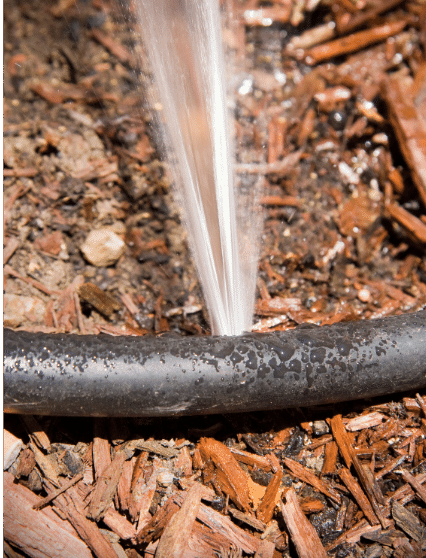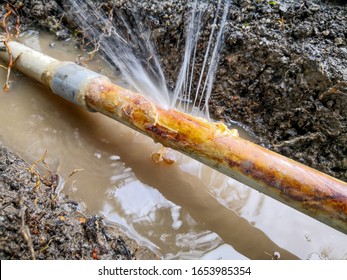How to Handle a Burst Pipe
How to Handle a Burst Pipe
Blog Article
Every person will have his or her own way of thinking when it comes to 6 Basic Steps to Stop a Burst Pipe from Getting Out of Control.

The immediate reaction when a pipe bursts in your building is to go in complete panic mode. Do not fret; you are not alone as many house owners feel in this manner, also. After all, this problem can cause significant home damage.
Though it may be difficult to do, remain tranquil and also accumulated. Making hasty decisions can make the circumstance even worse. To assist you out, here are six immediate actions you have to take when facing burst pipelines. Keep in mind, expertise is power so reading up on this before it happens will enable you to remain in control even amid a huge emergency water leakage:
Conduct a Quick Visual Examination
Though your impulse is to shut down the shutoff today, time out for a while and conduct a quick visual evaluation of the website. Try as well as identify where the water is dripping from. Doing so will certainly enable you to recommend the plumber on what area to consider. This less-than-a-minute perusal will conserve you time and also aid your plumber swiftly recognize the origin.
Shut the Main Water Shutoff
After a quick scan, you can currently turn off the main supply of water. Keeping water running will certainly result in huge damage. The last thing you need is significant flooding warps wooden floorings or damages devices and also furnishings. You additionally intend to stay clear of mold and mildew development. Switch off the valve and call the plumber for an emergency evaluation.
Drain the Pipeline
As you await the plumber to get here, drain the water streaming in the pipes. Just run your tap and purge the toilet to ensure that whatever water is remaining will entirely spurt. When you do this, the leakage will certainly stop going where it's not intended to be to begin with. Keeping that, the plumber can additionally function faster. Simply don't neglect to shut down the faucet after the pipelines are drained.
Try a DIY Pipeline Repair Service
If you've got handyman skills, do a minor repair service like sealing off a tiny crack. You can acquire piping sealer to make quick fixes. Beware with the application, so you don't intensify any type of problems. If you need to tighten up a few nuts and bolts, withstand need to over-tighten as this can lead to leaks down the line.
Remove Any Standing Water
Do not let any standing water sit for as well. It will certainly result in more damage if water permeates into your floors or rug. You likewise don't desire it to flow into crucial things like electronic devices. Clean up the water and dry the area off instantly. If you have electrical fans, keep them going to distribute the air and promote quicker drying out.
Call a Reliable Plumber
If you really feel uncertain about your skills to repair a little crack or little leak, it is best to call a professional plumber. When it comes to repairs, they have the understanding, skills, devices, and also experience to obtain things done fast. Playing with pipes is not a joke as it can result in more difficulties if done improperly. Locating a trustworthy plumbing solution guarantees your water leakage is taken care of successfully and successfully.
A Frozen Pipe Has Burst, What Are The Next Steps?
How to Tell if Pipes are Frozen
It’s important to catch frozen pipes early to prevent damages. Typically, you will be able to boost your thermostat or talk a professional plumber before any damage occurs. However, here are a few signs that will help you identify if your pipe is frozen.
No Water – An obvious sign that you have frozen pipes is if there’s a complete lack of water coming from your faucets or fixtures. Frost – If you can gain access to view your pipes, check to see if there is visible frost on them. Take note of which parts of the pipe has frost. Smell – If your pipes freezes, it will block food and waste down your drain, causing a backup and your room to begin to have a bad smell. How to Tell if a Frozen Pipe has Burst
Inspect the Inside of the Building. Go through each area of the building and look for actively dripping water and signs of water damage. Examine any exposed pipes and check them for frost or condensation. Especially keep an eye on rooms such as bathrooms, kitchens, laundry rooms, and unheated areas of the building. Turn on the faucets and flush your toilets. Ensure they are working and the water has no discoloration or smell to it. If there is only a slow trickle of water coming out, or no water at all, this might mean a frozen pipe has burst. Check your water meter. If all fixtures in the building are off and it still shows movement, this could be a sign of a burst. Check the exterior of the building. Look for water building up anywhere out of the ordinary, or sinkholes in your yard. Remove Water Right Away
It is important to clean up water right away to prevent mildew and mold buildup. You will need towels, buckets, mops, and a wet/dry vacuum. Do not wait for the plumber to remove the water for you, the longer you wait the more likely it is that you’ll get mold or severe water damage.
Avoid Extreme Temperatures
First off, make sure the temperature in your home is no lower than 55*F. If you are going to be gone for a long time, turn off your water with the shut off valve to prevent freezing and bursting.
Don’t Leave Still Water in Pipes
When the weather gets too cold, you should let water drip from your faucet. While the dripping might be irritating, this will help prevent water from freezing. You can detect a frozen pipe if the faucet stops working, or the toilet doesn’t refill.
Taking Precautions with Frozen Pipe Damage
A burst pipe is one of the most common issues people face at home. There can be a number of reasons why pipes burst in harsh climate conditions such as extremely cold temperatures. Low to freezing temperatures can freeze the pipes, causing there to be frozen pipe damage and leading them to burst. Regardless of the type of pipes – whether they be metal or plastic, they can still expand or burst and cause water damage to your home. A burst pipe also requires a significant amount of costs in repairs. This is why it’s important to take all the safety measures to prevent pipes from bursting.
Below are some frequently asked questions and helpful steps to take to safely solve any problems you may be experiencing with your pipes at home.
What to Do When a Pipe Bursts:
Turn off the main water supply Contact a professional Quickly remove and clean excess water to avoid further water damage. Take pressure off pipes by draining the faucets Circulate warm air in your home to slowly thaw pipes Use a repair sleeve to temporarily cover the damaged area of the pipe https://jenkinsrestorations.com/frozen-pipe-has-burst-whats-next/

Do you really like reading up on How to Fix a Burst Water Pipe? Try leaving feedback down below. We'd be glad to hear your suggestions about this write-up. We hope to see you back again soon. Liked our posting? Please share it. Let others check it out. Many thanks for your time. Visit again soon.
Excellence on call! Report this page